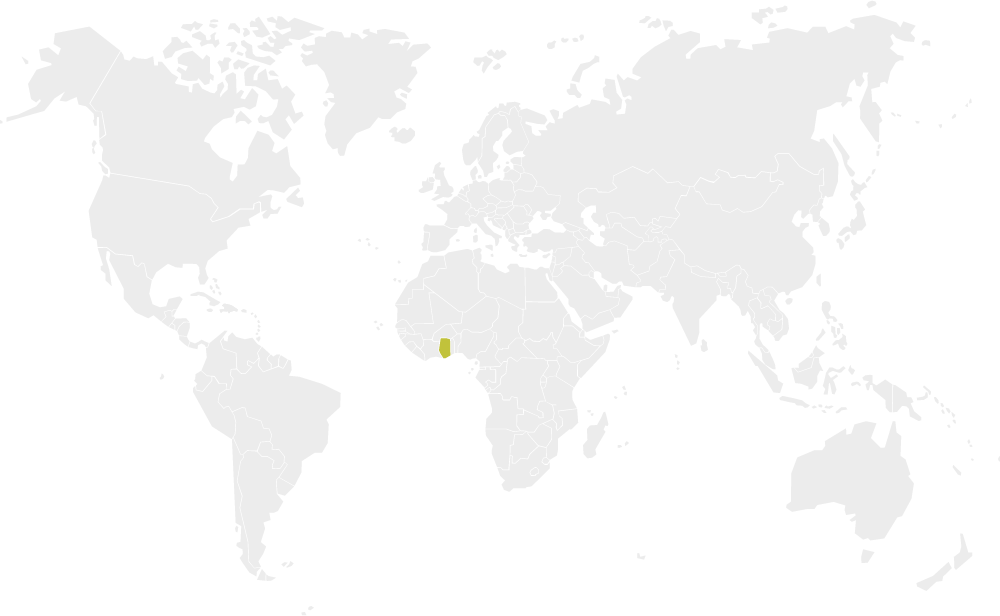Open Data for Developing Economies Case Studies
Ghana's Esoko
Leveling the Information Playing Field for Smallholder Farmers
by Francois van Schalkwyk, Andrew Young and Stefaan Verhulst
Reference
1 . Project conducted in collaboration with the Web Foundation, United States Agency for International Development (USAID), and the Mobile Solutions, Technical Assistance and Research (mSTAR) program at FHI 360.
2 Special thanks to Akash Kapur who provided crucial editorial support for this case study, and to the peer reviewers who provided input on a pre-published draft.
3 . Africa Progress Panel, Grain Fish Money: Financing Africa’s green and blue revolutions. Africa Progress Panel, 2014, http://app-cdn.acwupload.co.uk/wp-content/uploads/2014/05/APP_APR2014_24june.pdf.
4 . World Bank, Growing Africa: Unlocking the Potential of Agribusiness. Washington DC: World Bank, 2013, http://siteresources.worldbank.org/INTAFRICA/Resources/africa-agribusiness-report-2013.pdf.
5 . Food and Agriculture Organization, “Ghana: Country Fact Sheet on Food and Agriculture Policy Trends,” FAO, March 2015, http://www.fao.org/3/a-i4490e.pdf .
6 . Food and Agriculture Organization, Ghana and FAO: Partnering for agricultural development and resilient livelihoods, 2016, http://www.fao.org/3/a-az484e.pdf.
7 . International Fund for Agricultural Development (IFAD), Smallholders, Food Security, and the Environment, IFAD/UNEP, https://www.ifad.org/documents/10180/666cac24-14b6-43c2-876d-9c2d1f01d5dd.
8 . Feed the Future, “Fact Sheet: Feed the future USAID agriculture technology transfer project,” IFDC, 2014, https://ifdcorg.files.wordpress.com/2014/12/att-factsheet.pdf.
9 . D. Kleine, A. Light and M.J. Montero, “Signifiers of the Life We Value? Considering human development, technologies and fair trade from the perspective of the capabilities approach,“ Information Technology for Development, 18, no.1, pp. 42-60.
10 . T. Davies, Open Data in Developing Countries: Emerging insights from phase 1, Washington DC: World Wide Web Foundation, 2014, http://www.opendataresearch.org/sites/default/files/publications/Phase%201%20-%20Synthesis%20-%20Full%20Report-print.pdf.
11 . F. Van Schalkwyk, et al., “Open Data Intermediaries in Developing Countries,” Journal of Community Informatics, 12, no. 2, 2016, http://ci-journal.net/index.php/ciej/article/view/1146.
12 . http://www.godan.info/about
13 Andrew Young and Stefaan Verhulst, “Aclímate Colombia–Open Data to Improve Agricultural Resiliency,” Open Data’s Impact, DATE TBD http://odimpact.org/case-aclimate-colombia.html.
14 . World Wide Web Foundation, “Ghana Open Data Initiative,” http://webfoundation.org/our-work/projects/ghana-open-data-initiative-godi/.
15 . The portal might have been done as a result of extended maintenance in preparation for a revamped new offering, but when the Barometer assessment was being conducted no explanation was made available for the outage – so even if the outage was the result of ultimately beneficial work, trust in the platform and Ghanaian open data more generally likely suffered. World Wide Web Foundation, Open Data Barometer 3rd Edition: Africa Regional Report, 2016, http://opendatabarometer.org/3rdedition/regional-report/africa/
16 . Website of Uganda Open Data Initiative, http://data.gov.gh/.
17 . CountrySTAT, “Ghana,” http://www.countrystat.org/home.aspx?c=GHA.
18 . Website of the Ministry of Food and Agriculture, Republic of Ghana, http://mofa.gov.gh/site/; and for data on weekly market prices, see http://mofa.gov.gh/site/?page_id=13613.
19 . These data are validated by the Council for Scientific and Industrial Research (CSIR).
20 . Website of Esoko, https://esoko.com/about-us/our-story/.
21 . U.S. Agency for International Development, “Using ICT to Provide Agriculture Market Price Information in Africa,” Briefing Paper, 2010.
22 . U.S. Agency for International Development, “Using ICT to Provide Agriculture Market Price Information in Africa,” Briefing Paper, 2010.
23 . Pierre Courois and Julie Subervie, “Farmer Bargaining Power and Market Information Services,” American Journal of Agricultural Economics, 97, No. 3, pp. 953-977, 2014, http://ajae.oxfordjournals.org/content/97/3/953.
24 . Alex Adrason and François van Schalkwyk, Open Data Intermediaries in the Agriculture Sector in Ghana, Research Paper, Washington DC: World Wide Web Foundation, 2016, http://webfoundation.org/docs/2016/12/WF-RP-Open-Data-Intermediaries-in-Agriculture-Ghana-Update.pdf.
25 . Pierre Courois and Julie Subervie, “Farmer Bargaining Power and Market Information Services,” American Journal of Agricultural Economics, 97, No. 3, pp. 953-977, 2014, http://ajae.oxfordjournals.org/content/97/3/953.
26 . Alex Adrason and François van Schalkwyk, Open Data Intermediaries in the Agriculture Sector in Ghana, Research Paper, Washington DC: World Wide Web Foundation, 2016, http://webfoundation.org/docs/2016/12/WF-RP-Open-Data-Intermediaries-in-Agriculture-Ghana-Update.pdf.
27 . Ibid.
28 . Ministry of Food and Agriculture, Republic of Ghana, “Weekly Market Prices of Food Commodities,” http://mofa.gov.gh/site/?page_id=13613.



